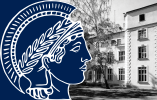Schneider, Martina: A Service for the Physicists? Van der Waerden's Early Contributions to Quantum Mechanics
The introduction of group-theoretic methods by Heisenberg, Wigner and Weyl was part of the process of the mathematization of quantum mechanics. These methods were not only highly effective for a mathematical deduction of the quantum numbers, i.e. the qualitative part of the spectrum of an atom, but their conceptual potential for quantum mechanics was also pointed out by Wigner and Weyl. Nevertheless, there was a mixed reaction within the physicists’ community to the use of group theory. The term ‘Gruppenpest’ (group pestilence) was coined.
During the 1920s and 1930s, the young Dutch mathematician Bartel Leendert van der Waerden (1903-1996) took part in the development of ‘modern algebra’, in which group theory as part of representation theory, established by Frobenius and Schur around the turn of the century, was being restructured. He took up the research on quantum mechanics on request of Ehrenfest, trying to clarify group-theoretic methods for the physicists. He invented spinor calculus (1929), wrote a monograph on group-theoretical methods in quantum mechanics (1932) and, together with Infeld, worked out a spinor calculus adapted to the needs of general relativity theory (1933). In my talk I will analyse these works in the context of the on-going debate about group-theoretic methods and in the context of the rise of ‘modern algebra’, comparing van der Waerden’s approach to that of Wigner and Weyl. The case study thus enhances the understanding of the process of mathematization in quantum mechanics from the perspective of history of mathematics.






 Schneider (Presentation)
Schneider (Presentation)